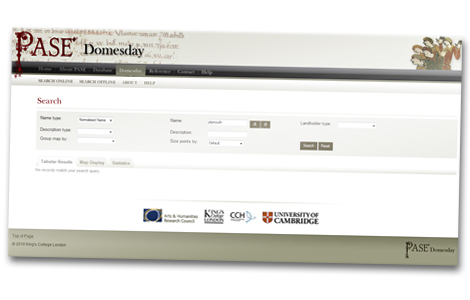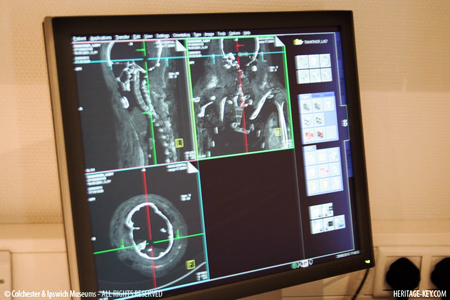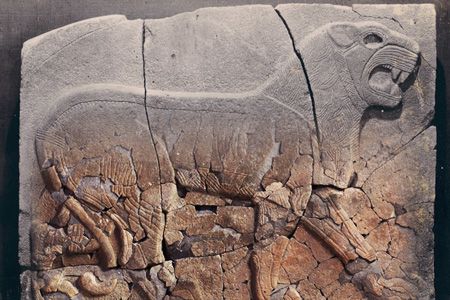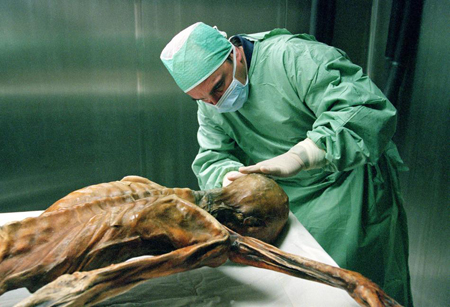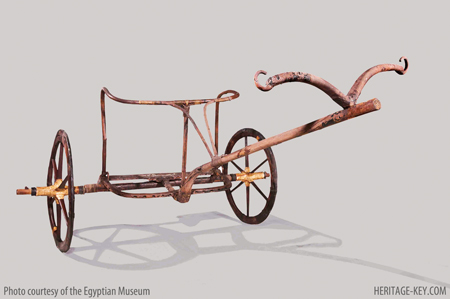PASE Domesday, a database of Domesday Book linked to mapping resources, has been launched online today, ahead of tomorrows Domesday special to be broadcast on BBC Two (preview video ‘The Domesday Inquest’). In the documentary, Dr Stephen Baxter seeks to prove that the Domesday Book could not have been used to collect taxes, arguing that it is about something far more important than money. According to Dr Baxter, its real purpose was to confer revolutionary new powers on the monarchy in Norman England. The Domesday Book The Domesday Book is the product of a great survey of England commissioned by…
-
-
Archaeologists have discovered a 1,800 year old tunnel that leads to a system of galleries 12 meters below Teotihuacan’s Temple of Quetzalcoatl, the Feathered Serpent, in Mexico. Spanning an area of more than 83 square kilometres, Teotihuacan is one of the largest archaeological sites in Mexico and is a UNESCO World Heritage Site. The city had nearly 250,000 inhabitants when it was at its height in the early 1st millennium AD. It also contains some of the largest pre-Columbian pyramids in the New World. Archaeologists hope that the galleries they detected are actually the tombs of Teotihuacans rulers. “For a…
-
This week sees the opening of the Ipswich Museum‘s new Egyptian Gallery. Visitors will be able tomarvel at the mummy of Lady Tahathor, or find out about daily life in ancient Egypt as they journey down the Nile. But wait… there has been a terrible crime! A thief has broken into the museum, and stolen a very rare and precious Egyptian artefact! Can you- or your kids -help solve the mystery? This Saturday, on the 7th of August, the Ipswich Museum celebrates the grand reopening of its Egyptian Gallery. At the centre of the new set-up is the mummy of…
-
After nine years of shifting through WWII bombing debris, restoration experts have puzzled back together over 30 Aramaean sculptures and reliefs. Watch the slideshow. When in November 1943 an air raid on Berlin destroyed the Tell Halaf Museum and its contents, it was thought one of Germany’s most important Near Eastern collections was lost forever. A year later more than 27,000 fragments were recovered from the museum’s ruins and taken to the cellars of the Pergamon Museum for storage. Luckily, archaeologists never throw something away. Restoration of the 3000-year-old sculptures and bas-reliefs eventually started in 2001. Now, after almost a…
-
In this digital age, largemuseum maps and heavy guide booksbadly needed when visitingthe bigger institutions seem so passe. But how exactlydo you get around then? At the American Museum of Natural History in New York, you can now chart your own course with their AMNH Explorer (video preview) a brand new app that is part custom navigation system and part personal tour guide for the museum’s world-famous halls. The app promises totake youfrom the edge of the universe to the age of the dinosaurs, providing turn-by-turn directions.When you urgentlyneed to find the bathroom, it will even calculate you the quickest…
-
Almost 32,000 years ago, man got its first puppy. Today still, humans have a special connection with animals, regardless if they are sitting on our laps, or – point on our plates. Why is it in our nature to accept of all kinds of creatures into our families and homes? What came first, the carbonade that would stay put, or the steadfast companion in the pursuit for game? And what if our first prehistoric attempts at art were no mindless doodling or sacred effigies, but an early publication of ‘Useful Beasts for Dummies’? In a paper describing a new hypothesis…
-
tzi has not been put on ice, on the contrary – things are hotting up for him! By decoding tzi the Iceman’s DNA, scientists have reached a new milestone in their study of the world’s mostfamous glacier mummy. Experts from three institutions have pooled their skills in order to map tzis entire genetic make-up: Albert Zink, Head of the EURAC Institute for Mummies and the Iceman, together with Carsten Pusch, from the Institute of Human Genetics at the University of Tbingen and Andreas Keller from the biotech firm febit in Heidelberg. Together the researchers reached a historic moment in the…
-
Steering clear of crocodiles and navigating around massive submerged trees, a team of divers started mapping some of the 25 freshwater pools of Cara Blanca, Belize, which were of importance to the ancient Maya civilisation. So far, the divers found fossilized animal remains, bits of pottery and in the largest pool explored an enormous underwater cave. The underwater archaeology project, led by University of Illinois anthropology professor Lisa Lucero, was the first of what the professor hopes will be a series of dives into the pools of the southern Maya lowlands in central Belize. The divers so far have explored…
-
Scientists have made a reconstruction of a 10,000 year old ancient woman, based on the skeletal remains found near Mexico’s Caribbean coast. Surprisingly, the reconstruction resembles people from Southeastern Asia,rather than Northern Asia. In 2002, divers discovered the remains of an Ice Age woman at an underwater cave 4.5 km from Tulum, on the Ycutan Peninsula. The well-preserved remains 90% complete are estimated to be between 10,000 and 12,000 years old. Based on the skeleton, experts have now reconstructed what Mujer de las Palmas (The Woman of the Palms) must have looked like with surprising results. The body structure, skin…
-
News that King Tut’s chariot will leave Egyptto join the final leg of the ‘Tuankhamun and the Golden Age of the Pharaohs’ exhibition in New York its first trip abroad has been confirmed by an SCA press release. In the same release Dr Hawass and his team say they continue to stand behind the findings published in JAMA earlier;King Tut died of complications from malaria and Kohlers disease. Mr. Farouk Hosni, Minister of Culture, confirmed that one of King Tuts chariotsis travelingto New York City, the first time that a chariot from Tutankhamun’stomb will be allowed out of Egypt. The…

